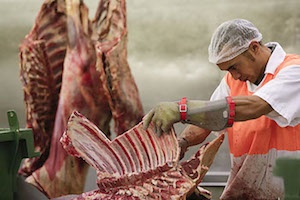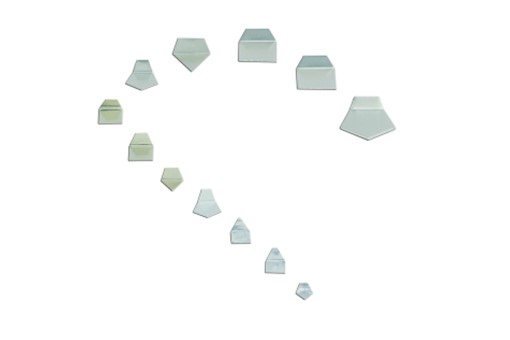Russia in 2020 showed a record growth in turkey breeding and became the fourth largest producer of turkey meat in the world

According to the analysis of the world production of turkey MEAT, conducted by the consulting agency AGRIFOOD Strategies, RUSSIA in 2020 showed a record growth of the industry by almost 20 percent and rose from 5th to 4th place in the world ranking of the largest producers. According to the results of the current year, Russian turkey breeders can enter the top three.
While global turkey meat production has remained relatively stable over the past decade, there are clear structural changes in the industry at the international level.
An analysis of the 2016–2020 data showed that most traditional turkey producing countries are reducing their output. This is largely due to the saturation of domestic demand, growing competition from the broiler sector, restrictions on exports to Muslim markets due to tightening of halal requirements, and a certain reduction in livestock due to periodic outbreaks of avian influenza.
Of the top 10 turkey producing countries, only four countries: Poland, Russia, Spain and Hungary showed an increase in production.
The United States , Germany, the United Kingdom and France, where industrial turkey farming originated, are seeing a gradual decline in turkey production due to declining demand and restrictions on EXPORT markets. Demand for turkey meat in Europe is declining due to relatively high levels of per capita consumption of 4 to 5 kg per year, as well as a significant shift of buyers to broiler meat.
In the US - the world's largest market for turkey meat, which accounts for more than half of the total - turkey consumption is stagnant due to seasonal sales, a significant part of which occurs around Thanksgiving and Christmas. In this regard, local producers are trying to find a way out in promoting the sale of products of deep processing - hams, hot dogs, burgers and ready meals.
Consumption in Europe and North America and quarantine measures related to the covid-19 pandemic have been “crippled”. Due to the closure of a significant number of food service and corporate catering establishments, the supply of turkey to these sectors has declined sharply, and retail sales have not been able to compensate for this drop.
Export markets have also stagnated due to the pandemic and associated logistical and quarantine restrictions, providing historic turkey suppliers with a small but steady market to sell surplus to countries in Asia, Africa and Latin America that do not produce turkey.
According to the forecasts of the European Association of Poultry Processors and Traders (AVEC), most European countries will continue to reduce turkey production throughout 2021. The US Department of Agriculture also does not expect this sector to pick up, despite the slow recovery of the economy and food service. Not bright prospects in Brazil: the local association of producers of protein products ABPA refers to a significant increase in the cost of feed and other cost components.
In contrast to the traditional leaders, the newcomer countries of the industry have shown positive results in the last five years and even in 2020, and some of them even record results. Polish turkey production has grown by 127 percent in five years - from 179 thousand tons to 408 thousand tons - thanks to significant investments in the industry and lower cost of turkey production compared to other EU countries and the UK, where the bulk of Polish production goes. For the same reason, the output of turkey-breeding products also increased in Hungary - by almost 25%. The growth of the industry in Spain over the past five years has exceeded 20%, but in the last two years it has slowed down significantly, and in 2020 it completely went into negative territory.
Over the past five years, Russia has become the second in the list of the most actively developing national turkey industries, having increased production by almost half (45.56%). Despite the financial difficulties of some companies and several outbreaks of avian influenza in 2018-2020, the industry managed to regroup and maintain a positive momentum. In particular, in 2020 alone, the increase amounted to 54 thousand tons (20%) and even made it possible to compensate for the decline in broiler production in the overall balance of Russian poultry meat.
In 2020, Russia became the undisputed world leader in the growth rate of turkey products, reaching 19.41%, many times ahead of the same indicator in the UK (4.80%), Hungary (4.62%), Italy (3.99%) and Germany (1.13%). At the same time, the rest of the top 10 countries in the production of turkey meat generally “went into the red”.
This year, Russian turkey breeders expect to increase the output of turkey meat by more than 20% (70 thousand tons) and reach the milestone of 400 thousand tons, which can lift Russia to the third line in the ranking of the world's leading producers and closely "bring" it to the second positions in the ranking. However, this will be possible only if there are no outbreaks of avian influenza and the pace of investment in the industry is maintained.
The growth potential of the industry is explained by the significant undersaturation of the domestic market with turkey meat. In most countries where turkey meat is a traditional component of the “meat basket”, its share reaches 10%, which for Russia could mean more than one million tons. At the same time, even the record 2021 estimated turkey production is two and a half times lower than these figures.
Turkey per capita consumption in Russia may reach 2.7 kilograms by the end of this year, while in European countries it averages 4-5 kilograms, in the usa - 7.8 kg, and in Israel - more than 10 .
The development of the sector has significant potential in the food service (including commercial and institutional catering) and in the retail sale of ready-made meat and sausage products - primarily ham - and delicacies. They account for the main volumes of sales in the "mature" for turkey markets in Europe and North America.
Recall that in order to develop the industry, Russian turkey breeders united in the National Association of Turkey Producers (NAPI) in May of this year and, as part of the Russia Meat Summit, announced an action program to promote their products in the domestic and foreign markets.
The consolidation of the efforts of the industry is designed to ensure its further growth and help Russia to become the second largest turkey producer in the world in the next two or three years, ahead of Poland, Germany, France and other historical leaders of the world turkey breeding.
Read together with it:
- United States, July Cattle Inventoryit is obvious that during the last five years there has been a constant reduction in both the number of cattle and cows (about 7%). Despite the high prices for cattle , this is a direct reflection of the now almost permanent drought in some regions and the reduction in the number of pastures, in addition, all this is exacerbated by high feed prices. We believe that this year the trend has not chan...
- Russia decided to become the world's largest exporter of porkIn the first six months of 2023, RUSSIA shipped over 74 thousand tons of pork and pork offal abroad, which is 57% more than in the same period last year in physical terms and 86% more in monetary terms. This was reported in the federal center for the development of exports of Russian agricultural products (Agroexport, owned by the Ministry of Agriculture). However, these data do not include data o...
- Japan will impose a ban on the export to Russia of cars with engines over 1.9 litersJapan will ban the EXPORT of cars with engines of more than 1.9 liters, hybrids and electric vehicles, as well as yachts, trains, metal and glass products, fabrics, including used clothes, and other goods. From August 9, Japan expands the list of goods whose export to RUSSIA is prohibited. it hit cars with an engine capacity of more than 1.9 liters, the Japanese Ministry of Economy said. The new r...
- COMMENTARY: How trade is developing in BelarusNatalya Melnikova HEAD of the Trade Organization and Public Catering Department of the Ministry of Antimonopoly Regulation and Trade of the Republic of Belarus Trade traditionally ranks second in the gross domestic product of Belarus after the manufacturing industry. More than 200 thousand people work in the industry. Natalya Melnikova, Head of the Trade Organization and Public Catering Department...
- How the sphere of trade develops in BelarusNatalya Melnikova HEAD of the Trade Organization and Public Catering Department of the Ministry of Antimonopoly Regulation and Trade of the Republic of Belarus Trade traditionally ranks second in the gross domestic product of Belarus after the manufacturing industry. More than 200 thousand people work in the industry. Natalya Melnikova, Head of the Trade Organization and Public Catering Department...



























































